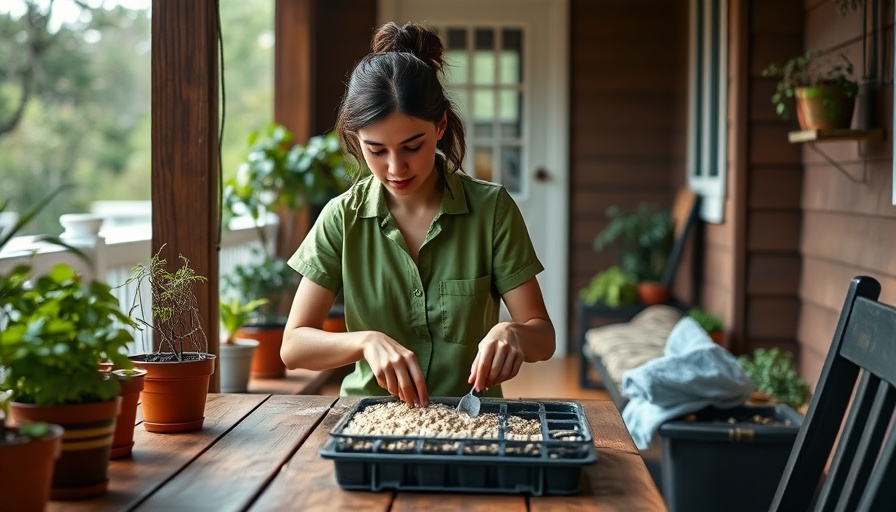
Understanding the Importance of Seed Starting Mix
When beginning a gardening journey, one of the most significant decisions to make involves the choice of the growing medium. As emphasized in the insightful video Seed Starting 101: Importance of Soil, opting for a proper seed starting mix over traditional garden soil can profoundly affect the germination and growth of your plants. Seed starting mixes are specifically formulated to create an optimal environment where seedlings can thrive, ensuring they have the nutrients needed for robust development.
In Seed Starting 101: Importance of Soil, the discussion dives into the crucial role of soil choices for gardening success, exploring key insights that sparked deeper analysis on our end.
Why Soil Matters: The Science of Seed Growth
The right growing medium is not just an anecdote; it’s grounded in science. Seed starting mixes are designed to be light and fluffy, allowing for excellent aeration and drainage. This is crucial because seeds require a balance of moisture retention and air flow to germinate successfully. In contrast, outdoor garden soil can be compact and dense, possibly harboring pathogens and pests that threaten seedlings. Understanding this can save new gardeners disappointment and frustration.
The Perfect Environment for Seedlings
Creating the ideal germination environment involves more than just choosing the right mix. Seed starting mixes usually contain a blend of peat moss, coir, vermiculite, and perlite, each component playing a specific role: peat moss retains moisture, while perlite promotes aeration. By cultivating seedlings in this tailored mixture, gardeners equip their plants with a fighting chance in their early stages of life, which is crucial for a flourishing garden later on.
Beyond the Basics: Common Misconceptions
Many novice gardeners believe that any type of soil can suffice for seed starting, which couldn’t be further from the truth. One common misconception is that more expensive mixes equate to better performance. While quality matters, it’s essential to understand that the components of a mix should specifically promote growth and sustainability. This clarity can help avoid overspending and wasted efforts.
Practical Tips to Enhance Seed Germination
For homeowners eager to establish their gardens, it's beneficial to implement several practical insights into your gardening routine:
- Always use fresh seed starting mix to avoid contaminants.
- Consider prehydrating your mix to ensure consistent moisture levels before planting seeds.
- Label your seedlings with variety names and planting dates for easier identification and record-keeping.
By incorporating these practical tips, gardeners can create a nurturing foundation for their plants, ultimately leading to a vibrant garden.
Future Trends in Gardening Mediums
The gardening community is also seeing trends that reflect a growing awareness of sustainability. Many are moving towards organic seed starting mixes and sustainable practices that replace synthetic fertilizers. As we push towards a greener future, it's crucial for aspiring gardeners to educate themselves on these evolving products. Following these trends not only benefits the environment but can enhance your gardening practice in innovative ways.
Conclusion: Get Ready for Your Gardening Journey
In today’s era, where sustainable living is becoming increasingly vital, knowing about the best practices for seed starting is crucial. Employing a quality seed starting mix can significantly impact your gardening results. If you’re a homeowner with a passion for gardening, take this knowledge and experiment. Start with the right growing medium, as it sets the stage for a thriving garden. Happy gardening!
 Add Row
Add Row  Add
Add 




Write A Comment